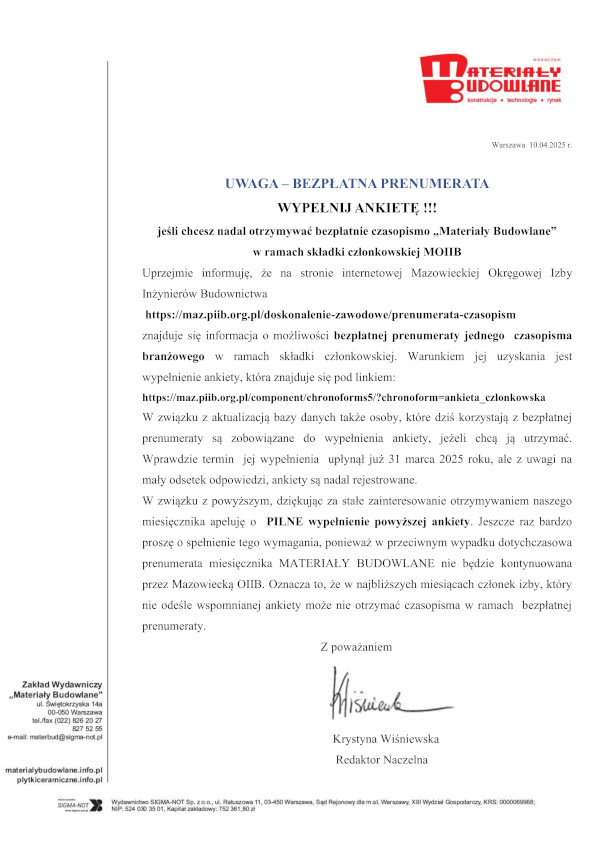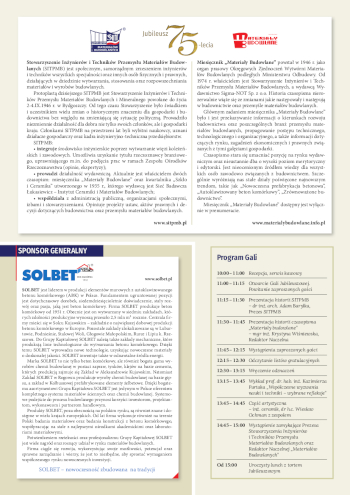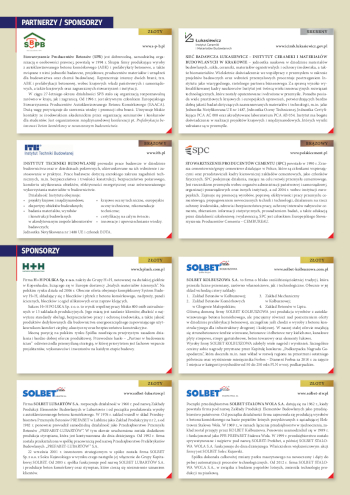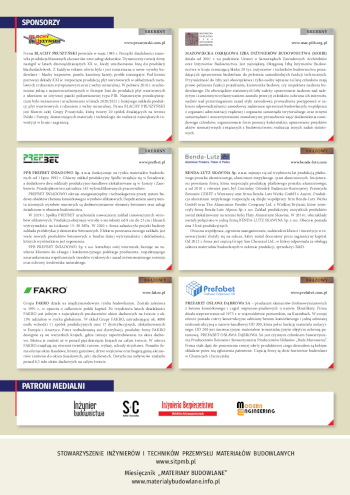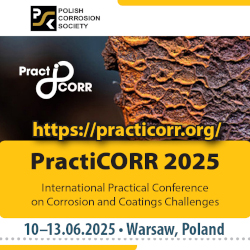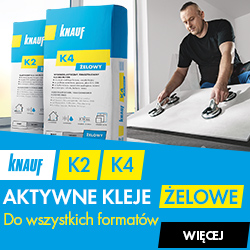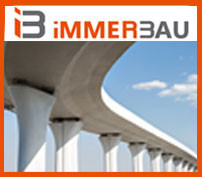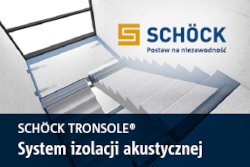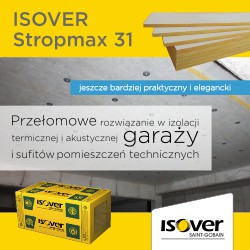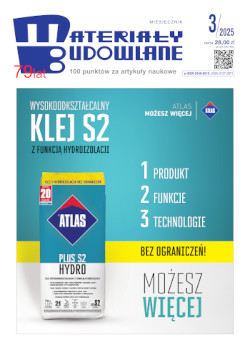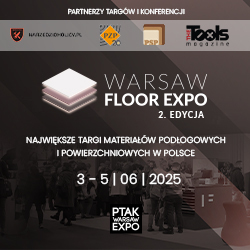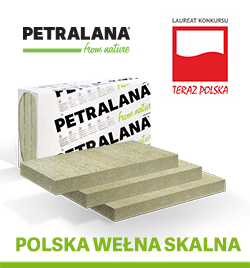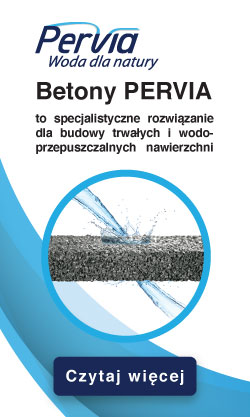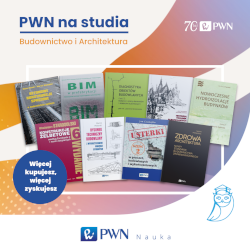Open Access (Artykuł w pliku PDF)
Open Access (Article in English PDF file)
Method of the fire safety level assessment on the example of historic buildings
dr inż. Dorota Markowska, Politechnika Łódzka, Wydział Inżynierii Procesowej i Ochrony Środowiska
ORCID: 0000-0002-5504-7725
dr inż. Paweł Wolny, Politechnika Łódzka, Wydział Inżynierii Procesowej i Ochrony Środowiska
ORCID: 0000-0003-2161-4506
mgr inż. Mateusz Banaś, Akademia Pożarnicza, Dział Projektów
ORCID: 0000-0003-4521-6334
dr inż. Sławomir Kukfisz, Komenda Główna Państwowej Straży Pożarnej
dr hab. inż. Bożena Kukfisz, prof. uczelni, Akademia Pożarnicza, Instytut Inżynierii Bezpieczeństwa
ORCID: 0000-0001-5049-7316
Adres do korespondencji: Ten adres pocztowy jest chroniony przed spamowaniem. Aby go zobaczyć, konieczne jest włączenie w przeglądarce obsługi JavaScript.
DOI: 10.15199/33.2024.06.06
Studium przypadku
Streszczenie. W artykule zaprezentowano innowacyjną półilościową metodę analizy i oceny poziomu bezpieczeństwa pożarowego względem sformułowanych celów strategii ochrony przeciwpożarowej w kontekście budynków zabytkowych. Metoda ta bazuje na metodzie delfickiej i brytyjskim standardzie PAS 911:2007. Polega ona na ocenie punktowej zaproponowanych dwudziestu czterech składowych systemu zabezpieczeń przeciwpożarowych w badanym obiekcie na podstawie precyzyjnie zdefiniowanych kryteriów i podkryteriów, a także wyznaczeniu wskaźnika poziomu bezpieczeństwa w oparciu o przyjęte strategie przeciwpożarowe. Zaproponowana metoda została zweryfikowana na dwóch rzeczywistych budynkach zabytkowych. Wykazano, że w analizowanych obiektach budowlanych należy wprowadzić dodatkowe zabezpieczenia przeciwpożarowe. Analizowane przypadki potwierdzają skuteczność zaproponowanej metody.
Słowa kluczowe: zabezpieczenia przeciwpożarowe; strategie przeciwpożarowe; bezpieczeństwo; budynek zabytkowy.
Abstract. The article presents an innovative semi-quantitative method of analysis and assessment of the level of safety in relation to the formulated objectives of the fire protection strategy in the context of historic buildings. Thismethod is based on the Delphi method and the British standard PAS 911:2007. It involves a point assessment of the proposed twenty four components of the fire protection system in the tested facility based on precisely defined criteria and sub-criteria, as well as determining the fire safety level indicator based on the adopted fire protection strategies. The proposed method was verified on two real historic buildings. It was shown that additional fire protection measures should be introduced in the analyzed buildings. The analyzed cases confirm the effectiveness of the proposed method.
Keywords: fire protections; fire protection strategies; safety; historic building.
Literatura
[1] Wolny P, Markowska D. Wpływ czynnika napędowego na skuteczność gaśniczą stałych urządzeń mgłowych wykorzystywanych do ochrony obiektów. Materiały Budowlane. 2023; 7: ISSN 0137-2971, e-ISSN 2449-951X, DOI 10.15199/33.2023.07.08.
[2] Bryant P, Brzezińska D. Strategie ochrony przeciwpożarowej budynków. Łódź, Wydawnictwo Politechniki Łódzkiej, 2018. ISBN: 978-83- 7283-899-5.
[3] Bryant P. Fire Strategies – Strategic Thinking, London 2013.
[4] Obwieszczenie Ministra Rozwoju i Technologii z 15 kwietnia 2022 r. w sprawie ogłoszenia jednolitego tekstu rozporządzenia Ministra Infrastruktury w sprawie warunków technicznych, jakim powinny odpowiadać budynki i ich usytuowanie z 15 kwietnia 2022 r., (Dz.U. 2022 poz. 1225).
[5] Larsson D. Developing the structure of a fire risk index method for timber-frame multi-storey apartment buildings. Lund: Department of fire safety engineering Lund University, 2000. ISSN: 1402-3504.
[6] British Standard PAS 911:2007 – Fire Strategies – Guidance And Framework For Their Formulation.
[7] British Standard PD 7974-7: 2003. Application of fire safety engineering principles to the design of buildings. Probabilistic risk assessment.
[8] Ustawa z 24 sierpnia 1991 r. o ochronie przeciwpożarowej( Dz.U.1991nr81poz.351,zpóźn.zm.).
[9] Danzi E, Fiorentini L, Marmo L. FLAME: A Parametric Fire Risk Assessment Method Supporting Performance Based Approaches. Fire Technol. 2021; https://doi.org/10.1007/s10694-020-01014-9.
[10] Watts JM. Jr. Fire Risk Indexing, SFPE Handbook of Fire Protection Engineering, Society of Fire Protection Engineers. 2016; DOI: 10.1007/978-1-4939-2565-0_82.
Przyjęto do druku: 01.06.2024 r.
Materiały Budowlane 6/2024, strona 26-31 (spis treści >>)
Open Access (Artykuł w pliku PDF)
Properties of cellulose as a thermal insulation material in building partitions
dr Barbara Pietruszka, Instytut Techniki Budowlanej, Zakład Fizyki Cieplnej, Akustyki i Środowiska
ORCID: 0000-0003-3268-7997
dr inż. arch. Michał Gołębiewski, Politechnika Warszawska, Wydział Architektury
ORCID: 0000-0001-7206-0369
dr Olena Oleksiienko, LLC UKRCERTIFICATION
ORCID: 0000-0002-5329-2217
Adres do korespondencji: Ten adres pocztowy jest chroniony przed spamowaniem. Aby go zobaczyć, konieczne jest włączenie w przeglądarce obsługi JavaScript.
DOI: 10.15199/33.2024.06.05
Oryginalny artykuł naukowy
Streszczenie. Przy opracowywaniu nowych materiałów o lepszych parametrach termoizolacyjnych, stosowanych do poprawy efektywności energetycznej budynków ważna jest także niewielka energochłonność procesów produkcji. W tym kontekście zasadne jest badanie możliwości wykorzystania surowców z recyklingu. W artykule przedstawiono wyniki badań przewodności cieplnej celulozy w zależności od zawilgocenia, w dużym zakresie deklarowanej gęstości. Przewodność cieplna celulozy w stanie suchym jest prawie stała (średnia wartość λ = 0,041W/(m•K)) i nie zależy od gęstości objętościowej. Zawilgocenie materiału przy 50% i 80% RH wykazuje wzrost przewodności cieplnej w zależności od gęstości. Otrzymane wyniki potwierdzają potencjał celulozy jako materiału termoizolacyjnego przegród budowlanych.
Słowa kluczowe: izolacja termiczna; celuloza; przewodność cieplna.
Abstract. When developing new materials with better thermal insulation parameters to improve the energy efficiency of buildings, low energy consumption of production processes is also important. In this context, it is justified to investigate the possibilities of use of recycled resources. This paper presents the results of testing the thermal conductivity of cellulose depending on moisture content, in a large range of declared densities. The thermal conductivity of cellulose in the dry state is almost constant (on average λ = 0.041 W/(m•K)) and does not depend on the apparent density. The rise of the moisture content of the material at 50% and 80% RH shows an increase in thermal conductivity, depending on the density. The obtained results confirmthe potential of cellulose as a thermal insulationmaterial in building partitions.
Keywords: thermal insulation; cellulose; thermal conductivity.
Literatura
[1] European Commission, Joint Research Centre – Pavel C, Blagoeva D. Competitive landscape of the EU’s insulationmaterials industry for energyefficient buildings – Revised edition. Publications Office. 2018, DOI: 10.2760/750646.
[2]Grazieschi G, Asdrubali F, Thomas G. Embodied energy and carbon of building insulating materials: A critical review. Cleaner Environmental Systems. 2021; https://doi.org/10.1016/j.cesys. 2021.100032.
[3] Asdrubali F, D’Alessandro F, Schiavoni S. A review of unconventional sustainable building insulation materials. Sustainable Materials and Technologies. 2015; https://doi.org/10.1016/j. susmat. 2015.05.002.
[4] Zaorski R. Certyfikat CE dla celulozowych izolacji termicznych, na podstawie normy zharmonizowanej. Izolacje. 2014;5: 20 – 24.
[5] Drećka M. Ocieplanie przegród zewnętrznych celulozą w świetle nowych wymagań cieplnych. Izolacje. 2014;6: 58 – 62.
[6] FabijańskaM,ZaorskiR.2015.Ekologiczneaspekty wykorzystania wybranych materiałów stosowanych jako izolacje termiczne – polemika. Izolacje; 2.
[7] PN-EN 15101-1:2013-12. Wyroby do izolacji cieplnej w budownictwie. Wyroby z celulozy w postaci luźnej (LFCI) formowane in situ Część 1: Specyfikacja wyrobów przed zastosowaniem.
[8] PN-EN 12667:2002. Thermal performance of building materials and products – Determination of thermal resistance by means of guarded hot plate and heat flow meter methods – Products of high and medium thermal resistance.
[9] Soto M, Rojas C, Cárdenas-Ramírez JP. Characterization of a thermal insulatingmaterial based on awheat strawand recycled paper cellulose to be applied in buildings by blowing method. Sustainability. 2023; https://doi.org/10.3390/su15010058.
[10] Schiavoni S, D’Alessandro F, Bianchi F,Asdrubali F. Insulation materials for the building sector:Areview and comparative analysis. Renewable and Sustainable Energy Reviews. 2026; https://doi. org/10.1016/j. rser. 2016.05.045.
[11] Janowska-Renkas E, Król A, Pochwała S, Pałubski D, Adamska M, Klementowski I. The fire resistance and heat conductivity of natural construction material based on straw and numerical simulation of building energy demand. Energies. 2022; https://doi. org/10.3390/en15031155.
[12] Fedorik F, Zach J, Lehto M, Kymäläinen HR, Kuisma R, Jallinoja M, Illikainen K, Alitalo S. Hygrothermal properties of advanced bio-based insulation materials. Energy and Buildings. 2021; https://doi.org/10.1016/j.enbuild. 2021.111528.
[13] Viel M, Collet F, Prétot S, Lanos C. Hemp- -straw composites: Gluing study and multi-physical characterizations. Materials. 2019; https://doi. org/10.3390/ma12081199
Przyjęto do druku: 04.06.2024 r.
Materiały Budowlane 6/2024, strona 22-25 (spis treści >>)
Open Access (Artykuł w pliku PDF)
Badania fizykomechaniczne tynków glinianych
dr inż. Piotr Konca, Politechnika Łódzka, Wydział Budownictwa, Architektury i Inżynierii Środowiska
ORCID: 0000-0002-5415-5169
dr hab. inż. Jacek Szer, prof. uczelni, Politechnika Łódzka, Wydział Budownictwa, Architektury i Inżynierii Środowiska
ORCID: 0000-0002-7830-2952
Adres do korespondencji: Ten adres pocztowy jest chroniony przed spamowaniem. Aby go zobaczyć, konieczne jest włączenie w przeglądarce obsługi JavaScript.
DOI: 10.15199/33.2024.06.04
Oryginalny artykuł naukowy
Abstract. The main objective of this study was to test the water resistance of clay plaster and modified plaster, while ensuring performance properties such as adhesion and vapour permeability. Four types of specimens were prepared for testing: a control specimen of clay plaster, a plaster with an admixture of a hydrophobizing agent and water-glass. The last samples, where part of the clay plaster was replaced with hydrated lime. The best results were obtained for the admixture of the hydrophobizing agent.
Keywords: clay; physical properties; plaster.
Streszczenie. Głównym celem badań było określenie wodoodporności tynków glinianych i modyfikowanych, przy jednoczesnym zapewnieniu właściwości użytkowych, takich jak przyczepność i paroprzepuszczalność. Do badań przygotowano cztery rodzaje próbek: kontrolną z tynku glinianego, tynk z domieszką środka hydrofobizującego oraz tynk ze szkłem wodnym. W ostatnich próbkach część tynku glinianego zastąpiono wapnem hydratyzowanym. Najlepsze wyniki uzyskano przy domieszce środka hydrofobizującego.
Słowa kluczowe: glina, właściwości fizyczne, tynk.
Literature
[1]WaltjenT. Deatils for Passive Houses. A Catalogue of Ecologically Rated Constructions. Springer Verlag. 1999. Vienna, Austria, ISBN 978-3-211-29763-6
[2] Gernot M. Podręcznik budowania z gliny. Fundacja Cohabitat 2012.
[3] Darith-Anthony H, Julien Y, Guilleminotb J, Abdelali D, Anh-Minh T, Bornertc M. Desiccation cracking of heterogeneous clayey soil: Experiments, modeling and simulations. Engineering Fracture Mechanics. 2021; 258: 108065.
[4] Altmäe E, Ruus A, Raamets J, Tungel E. Determination of Clay-Sand Plaster Hygrothermal Performance: Influence of Different Types of Clays on Sorption and Water Vapour Permeability. Springer International Publishing. 2019; str. 945 – 955
[5] El Fgaier F, Lafhaj Z, Chapiseau C,Antczak E. Effect of sorption capacity on thermo-mechanical properties of unfired clay bricks. J.Build.Eng. 2016; 6: 86 – 92.
[6] Kamieniarz M. Building with clay in the aspect of energy efficiency and environmental protection. Materiały Budowlane. 2014; 11.
[7] Jiang Y, Phelipot-Mardele A. Tuleja zaciskowa. F, Lanos C, Lemke M, Ansell M, Lawrence, M. Moisture buffer, fire resistance and insulation potential of novel bio-clay plaster. Construction and Building Materials. 2020; 244, 118353.
[8] PN-EN1015-11:2020-04;Methods of test formortar for masonry – Part 11: Determination of flexural and compressive strength of hardened mortar.
[9] PN-EN 1015-18:2003;Methods of test for mortar for masonry – Part 18: Determination of water absorption coefficient due to capillary action of hardened mortar.
[10] PN-EN 1015-12:2016-08; Methods of test for mortar for masonry – Part 12: Determination of adhesive strength of hardened rendering and plastering mortars on substrates.
[11] PN-EN 1015-19:2000/A1:2005. Methods of test for mortar for masonry – Part 19: Determination of water vapour permeability of hardened rendering and plastering mortars.
[12] Żeńczykowski W. Budownictwo Ogólne, tom3/2, Roboty wykończeniowe i instalacyjne. Arkady 1987.
Accepted for publication: 04.04.2024 r.
Materiały Budowlane 6/2024, strona 17-21 (spis treści >>)
Open Access (Artykuł w pliku PDF)
Wykorzystanie i potencjał cyfrowego bliźniaka do monitorowania stanu konstrukcji i badań nieniszczących w celu poprawy trwałości i zapobiegania awariom istniejących konstrukcji
MSc Daria Jasińska, Bydgoszcz University of Science and Technology; Faculty of Civil and Environmental Engineering and Architecture
ORCID: 0000-0002-9075-795X
Phd, Dsc University Professor Maciej Dutkiewicz, Bydgoszcz University of Science and Technology; Faculty of Civil and Environmental Engineering and Architecture
ORCID: 0000-0001-7514-1834
Manon Ancelin, Ecole Supérieure des Ingénieurs des Travaux de la Construction, Francja
Elodie De Morais Dias, Ecole Supérieure des Ingénieurs des Travaux de la Construction, Francja
Arthur Grasselli, Ecole Supérieure des Ingénieurs des Travaux de la Construction, Francja
Nora Morise, Ecole Supérieure des Ingénieurs des Travaux de la Construction, Francja
Gabriel Laot, Ecole Supérieure des Ingénieurs des Travaux de la Construction, Francja
Adres do korespondencji: Ten adres pocztowy jest chroniony przed spamowaniem. Aby go zobaczyć, konieczne jest włączenie w przeglądarce obsługi JavaScript.
DOI: 10.15199/33.2024.06.03
Studium przypadku
Abstract. In this article, we consider the application of Structural Health Monitoring (SHM) and Non-Destructive Testing (NDT) in existing facilities. Based on the literature and our own experience, the issue of structural monitoring is discussed with regard to the direction of this application in the context of further implementing digital twins in the future. The general algorithm and procedures in such a process and considers the impact of continuous monitoring on durability of the object. Building information modelling, structural health monitoring (SHM), 'Non-Destructive Testing' (NDT) are discussed. The whole is based on structures that are extremely important to the industry, such as industrial chimneys. In this article, we discuss an approach to automating the condition inspection process of existing facilities in the context of information management and the use of this information. Reference was made to examples of condition analyses of two steel chimney structures.
Keywords: Non-Destructive Testing (NDT); chimneys; digital twin; existing structures; Structural Health Monitoring (SHM).
Streszczenie. W artykule rozważane jest zastosowanie Structural Health Monitoring (SHM) oraz Non-Destructive Testing (NDT) w istniejących obiektach. Na podstawie literatury i własnego doświadczenia, zagadnienie monitorowania konstrukcji zostało omówione w odniesieniu do kierunku tego zastosowania w kontekście dalszego wdrażania cyfrowych bliźniaków w przyszłości. Przedstawiono ogólny algorytm i procedury w takim procesie oraz rozważono wpływ ciągłego monitoringu obiektu na jego trwałość. Omówiono modelowanie informacji o budynku, monitorowanie stanu konstrukcji (SHM), badania nieniszczące (NDT). Całość bazuje na konstrukcjach niezwykle ważnych dla przemysłu, takich jak kominy przemysłowe. W artykule omawiamy podejście do automatyzacji kontroli stanu technicznego istniejących obiektów w kontekście zarządzania informacją i wykorzystania tej informacji. Odniesiono się do przykładów analiz konstrukcji dwóch stalowych kominów.
Słowa kluczowe: badania nieniszczące (NDT); kominy; cyfrowy bliźniak; istniejące konstrukcje; monitorowanie stanu konstrukcji (SHM).
Literature
[1] Volk R, Stengel J, Schultmann F. Building InformationModeling (BIM) for existing buildings – Literature review and future needs.Automation in Construction, vol. 38, pp. 109-127, 2014, DOI: 10.1016/j.autcon.2013.10.023. Available: https://www.sciencedirect.com/science/article/ pii/S092658051300191X.
[2] Ismail AS, Ali KN, Iahad NA. A review on BIM-based automated code compliance checking system, in Proc. 2017 Int. Conf. Research and Innovation in Information Systems (ICRIIS), 2017, pp. 1-6, DOI: 10.1109/ICRIIS. 2017.8002486. Available: https://ieeexplore.ieee.org/document/ 8002486.
[3] Yen YN, Weng KH, Huang HY. Study on information management for the conservation of traditional Chinese architectural heritage – 3D modelling and metadata representation. ISPRS Ann. Photogramm. Remote Sens. Spatial Inf. Sci., vol. 2, no. 5/W1, pp. 331-336, 2013.Available: http://www.isprs-ann-photogramm-remote- -sens-spatial-inf-sci.net/II-5-W1/331/2013/.
[4] Baik A, Boehm J, Robson S. Jeddah historical building information modeling ‘JHBIM” Old Jeddah-Saudi Arabia,” Int. Arch. Photogramm. Remote Sens. Spatial Inf. Sci., vol. 40, no. 5W2, pp. 73-78, 2013. Available: http://www.scopus.com /inward/record.url?eid=2-s2.0-84924289373&partnerID= 40&md5=8c861677387fca1ecba- 46c9b02343a33.
[5] Arayici Y. Towards building information modelling for existing structures. Struct. Surv., vol. 26, no. 3, pp. 210-222, 2008. Available: http://www.emeraldinsight.com/doi/abs/10.1108/ S1479-3563(2012)000012B007.
[6] Del Giudice M, Osello A. BIM for cultural heritage. Int.Arch. Photogramm. Remote Sens. Spatial Inf. Sci. ISPRS Arch., vol. 40, no. 5W2, pp. 225-229, 2013. Available: http://www.scopus. com/inward/record.url?eid=2-s2.0- 84924330169&partnerID=tZOtx3y1.
[7] Pocobelli DP, Boehm J, Bryan P, et al. BIM for heritage science: a review. Herit. Sci., vol. 6, no. 30, 2018. DOI: 10.1186/s40494-018-0191-4. Available: https://link. springer. com/article/ 10.1186/s40494-018-0191-4.
[8] Shenkman R, Ponomaryov A. Advantages of using BIM (BIM-technology) for the design and construction of subsoil use industry buildings and structures. J. Phys.: Conf. Ser., vol. 1928, no. 012052, 2021. DOI: 10.1088/1742-6596/ 1928/1/012052. Available: https://iopscience. iop. org/article/10.1088/1742-6596/1928/1/012052/pdf.
[9] Types and Design of Steel Chimney Structure. The Constructor. org. [Online].Available: https://theconstructor. org/structural-engg/steel-chimney-types- design/980/. [Accessed:Aug. 02, 2022].
[10] Dutkiewicz M. Expertise opinion of the 80 m high chimney. 2022.
[11] Gołębiowska I, Dutkiewic M. Subcritical flow regime of tandem interfering cylinders. IOP Conf. Ser.: Mater. Sci. Eng., vol. 245, 062053, 2017, DOI: 10.1088/1757-899X/245/6/062053.
[12] Dutkiewicz M, Machado MR, Matt CFT, Castello DA. Spectral model and experimental validation of hysteretic and aerodynamic damping in dynamic analysis of overhead transmission conductor. Mech. Syst. Signal Process., vol. 136, p. 106483.
[13] Moyano J, Gil-Arizon I, Nieto-Julian JE, Marin-Garcia D. Analysis and management of structural deformations through parametric models and HBIM workflow in architectural heritage. J. Build. Eng. 2022; vol. 45, p. 103274.
[14] Le ‘BIMde l’industrie’monte en puissance,” The Agility Effect.com. [Online]. Available: https://www.theagilityeffect.com/fr/article/lebim- de-lindustrie-monte-en-puissance/. [Accessed: Aug. 02, 2022].
[15] Qu’est-ce que le BIM? MagiCAD. com. [Online]. Available: https://www.magicad. com/fr/bim/. [Accessed: Aug. 02, 2022].
[16] Du PIM au BIM. Nextpage.fr. [Online]. Available: https://www.nextpage.fr/pim-bim/. [Accessed: Aug. 02, 2022].
[17] Plant Information Models. Neolant.com. [Online]. Available: https://www.neolant. com/IModeling/. [Accessed: Aug. 02, 2022].
[18] Guzzetti F, Anyabolu KLN, Biolo F, D’Ambrosio L. BIM for existing construction:A different logic scheme and an alternative semantic to enhance the interoperability.Appl. Sci., vol. 11, p. 1855, 2021.
[19] Shoaib KhanM, KhanM, BughioM, Talpur BD, Kim IS, Seo J. An integrated HBIM framework for the management of heritage buildings. Buildings, vol. 12, p. 964, 2022.
[20] Arayici Y, Tah J. Towards building information modelling for existing structures. Struct. Surv., vol. 26, no. 3, p. 210, 2008.
[21] Dutkiewicz M,Aydin E, Öztürk B.Analysis of efficiency of passive dampers in multistorey buildings. J. Sound Vib., vol. 439, pp. 17-28.
[22] Dutkiewicz M, Gołębiowska I, Shatskyi I, Shopa V, Velychkovych A. Some aspects of design and application of inertial dampers. MATEC Web Conf., vol. 178, p. 06010.
Accepted for publication: 21.05.2024 r.
Materiały Budowlane 6/2024, strona 12-16 (spis treści >>)
Open Access (Artykuł w pliku PDF)
Effect of modification of cement mortar with selected nanoparticles on abrasiveness and subsurface tensile strength
dr inż. Jacek Szymanowski, Politechnika Wrocławska, Wydział Budownictwa Lądowego i Wodnego
ORCID: 0000-0002-8154-8726
Adres do korespondencji: Ten adres pocztowy jest chroniony przed spamowaniem. Aby go zobaczyć, konieczne jest włączenie w przeglądarce obsługi JavaScript.
DOI: 10.15199/33.2024.06.02
Oryginalny artykuł naukowy
Streszczenie. W artykule przedstawiono analizę wpływu wybranych nanocząstek na określone parametry zaprawy warstwy wierzchniej podłogi betonowej. Badania zostały przeprowadzone na 13 seriach zapraw różniących się rodzajem dodatku oraz jego ilością. Wykazano, że dodatek każdej z badanych nanocząstek wpływa korzystnie na takie właściwości warstwy wierzchniej, jak ścieralność i przypowierzchniowa wytrzymałość na rozciąganie oraz określono optymalną ilość dodatku w przypadku każdego rodzaju nanocząstek.
Słowa kluczowe: warstwy wierzchnie; nanocząstki; podłogi betonowe; ścieralność; przypowierzchniowa wytrzymałość na rozciąganie.
Abstract. The article presents an analysis of the impact of selected nanoparticles on selected mortar overlay parameters in concrete floors. The tests were carried out for 13 series ofmortars differing in the type of additive and its amount. It was shown that the addition of each of the tested nanoparticles had a positive effect on the overlay properties, such as abrasion and subsurface tensile strength, and the optimal amount of the additive for each type of nanoparticles was indicated.
Keywords: overlays; nanoparticles; concrete floors; abrasion resistance; subsurface tensile strength.
Literatura
[1] Hajduk P. Projektowanie podłóg przemysłowych. 2013.Warszawa:Wydawnictwo Naukowe PWN.
[2] Chmielewska B, Czarnecki L. Wymagania norm dotyczące posadzek przemysłowych. Materiały Budowlane. 2012; 2: 5 – 9.
[3] Sadłowski K, Urbanowicz D, Warzocha M. Podkłady podłogowe: Wymagania, projektowanie, wykonawstwo. Materiały Budowlane. 2015; 11: 81 – 84.
[4] PanX, Shi Z, Shi C, Ling T-C, LiN. Are view on concrete surface treatment Part I: Types and mechanisms. Constr. Build. Mater. 2017; 132: 578 – 590.
[5] Santos DS, Santos PM, Dias-Da-Costa D. Effect of surface preparation and bonding agent on the concrete-to-concrete interface strength. Constr. Build. Mater. 2012; 37: 102 – 110.
[6] Sadowski Ł. Adhesion in Layered Cement Composites; Springer. 2019; Berlin/Heidelberg, Germany, Volume 101.
[7] JavedA, Gillani SAA, Abbass W, Riaz MR, Hameed R, Abbas S, Salmi A, Deifalla AF. Mechanical Performance of Amorphous Metallic Fiber- Reinforced and Rubberized Thin Bonded Cement-Based Overlays. Sustainability. 2022; 14, 8226.
[8] Lin Y, Du H. Graphene reinforced cement composites: A review. Constr. Build. Mater. 2020; 265, 120312.
[9] Czarnecki L. Nanotechnologia w budownictwie. Przegląd Budowlany. 2011; 1.
[10] Silva JJ, Ismael R, Carmo RNF, Lourenço C, Soldado E, Costa H, Júlio E. Influence of nano-SiO2 and nano-Al2O3 additions on the shear strength and the bending moment capacity of RC beams. Constr. Build. Mater. 2016; 123: 35 – 46.
[11] Silva JJ, Ismael R, Carmo RNF, Lourenço C, Soldado E, Costa H, Júlio E. Influence of nano-SiO2 and nano-Al2O3 additions on the shear strength and the bending moment capacity of RC beams. Constr. Build.Mater. 2016; 123: 35 – 46.
[12] Mohseni E, Miyandehi BM, Yang J, Yazdi MA. Single and combined effects of nano-SiO2, nano-Al2O3 and nano-TiO2 on the mechanical, rheological and durability properties of self-compactingmortar containing fly ash. Construction and Building Materials. 2015; 84: 331 – 340.
[13] Szymanowski JM, Sadowski Ł. Functional and adhesive properties of cement-based overlays modified with amorphous silica nanospheres. Journal of Adhesion. 2020, 96, nr 1-4: 207 – 228.
[14] Szymanowski JM, Sadowski Ł. The influence of the addition of tetragonal crystalline titanium oxide nanoparticles on the adhesive and functional properties of layered cementitious composites. Composite Structures. 2020; 233, art. 111636: 1 – 11.
[15] Szymanowski JM, Sadowski Ł. The development of nanoalumina-based cement mortars for overlay applications in concrete floors. Materials. 2019; 12, nr 21, art. 3465.
[16] Szymanowski J. Comparative analysis of the effect ofmodifying overlay materialwith selected nanoparticles on its adhesion to the substrate in concrete floors.W:Advanced Joining Processes/Lucas F.M. da Silva, PauloA. F.Martins, Mohamad S. El-Zein (ed.). Singapore: Springer, cop. 2020. s. 131 – 151.
[17] PN-EN 13892-3:2005Metody badań materiałów na podkłady podłogowe – Część 3: Oznaczenie odporności na ścieranie według Boehmego.
[18] PN-EN 1542:2005 Wyroby i systemy do ochrony i napraw konstrukcji betonowych – Metody badań – Pomiar przyczepności przez odrywanie.
[19] Krzywiński K, Sadowski Ł, Szymanowski J, Żak A, Piechówka-Mielnik M. Attempts to Improve the Subsurface Properties of Horizontally-Formed Cementitious Composites Using Tin(II) Fluoride Nanoparticles. Coatings 2020, 10, 83.
[20] Haruehansapong S, Pulngern T, Chucheepsakul S. Effect of nanosilica particle size on the water permeability, abrasion resistance, drying shrinkage, and repair work properties of cementmortar containing nano-SiO2.Advances in Materials Science and Engineering 2017.
[21] Nivethitha D, Srividhya S,Dharmar S. Reviewon Mechanical Properties of Cement Mortar Enhanced with Nanoparticles. Int. J. Sci.Res. 2014, 5, 913 – 916.
[22] Paul SC, van Rooyen AS, van Zijl GP, Petrik LF. Properties of cementbased composites using nanoparticles: A com-prehensive review. Constr. Build. Mater. 2018; 189: 1019 – 1034.
[23] Krakowiak KJ, Thomas JJ, James S, Abuhaikal M, Ulm F-J. Development of silica-enriched cement-based materials with improved aging resistance for application in high-temperature environments. Cem. Concr. Res. 2018; 105: 91 – 110.
[24] Diamanti MV, Paolini R, Rossini M,Aslan AB, ZinziM, Poli T, Pedeferri MP. Long termself-cleaning and photocatalytic performance of anatase added mortars exposed to the urban environment. Constr. Build. Mater. 2015; 96: 270 – 278.
[25] Mohammed A, Sanjayan JG, Duan WH, Nazari A. Graphene Oxide Impact on Hardened Cement Expressed in Enhanced Freeze – Thaw Resistance. J. Mater. Civ. Eng. 2016; 28, 4016072.
[26] BeeldensA.An environmental friendly solution for air purification and self-cleaning effect: the application of TiO2 as photocatalyst in concrete. In Proceedings of the Transport Research Arena Europe – TRA, Göteborg, Sweden, 12-15 June 2006; pp. 12 – 16.
[27] Behfarnia K, Salemi N. The effects of nano-silica and nano-alumina on frost resistance of normal concrete. Constr. Build.Mater. 2013; 48: 580 – 584.
[28] Liu J, Li Q, Xu S. Influence of nanoparticles on fluidity and mechanical properties of cement mortar. Constr. Build. Mater. 2015; 101: 892 – 901.
[29] Wang L, Zheng D, Zhang S, Cui H, Li D. Effect of Nano-SiO2 on the Hydration andMicrostructure of PortlandCement.Nanomaterials 2016; 6, 241.
[30] Ng DS, Paul SC,AnggrainiV, Kong SY, Qureshi TS, Rodriguez CR, Liu QF, Šavija B. Influence of SiO2, TiO2 and Fe2O3 nanoparticles on the properties of fly ash blended cement mortars. Constr. Build. Mater. 2020; 258, 119627.
[31] Francioso V, Moro C, Martinez-Lage I, Velay-Lizancos M. Curing temperature: A key factor that changes the effect of TiO2 nanoparticles on mechanical properties, calcium hydroxide formation and pore structure of cement mortars. Cement and Concrete Composites. 2019; 104, 103374.
Przyjęto do druku: 20.05.2024 r.
Materiały Budowlane 6/2024, strona 8-11 (spis treści >>)
Open Access (Artykuł w pliku PDF)
Practical application of the concept of equivalent concrete performance
dr inż. Grzegorz Bajorek, prof. PRz, Politechnika Rzeszowska, Wydział Budownictwa, Inżynierii Środowiska i Architektury
ORCID: 0000-0001-5312-8866
dr inż. Piotr Górak, CEMEX Polska Sp. z o.o.
ORCID: 0000-0003-3479-7647
dr hab. inż. Artur Łagosz, prof. AGH, AGH Akademia Górniczo-Hutnicza, Wydział Inżynierii Materiałowej i Ceramiki
ORCID: 0000-0002-4401-5760
Adres do korespondencji: Ten adres pocztowy jest chroniony przed spamowaniem. Aby go zobaczyć, konieczne jest włączenie w przeglądarce obsługi JavaScript.
DOI: 10.15199/33.2024.06.01
Oryginalny artykuł naukowy
Streszczenie. W artykule przedstawiono sposób oceny równoważnych właściwości użytkowych betonów przeznaczonych do stosowania w klasach ekspozycji XC2 lub XC4, wykonanych na bazie nowo wprowadzonego na rynek cementu CEM II/C-M (W-LL) 32,5R. Do oceny wykorzystano wytyczne wskazane w raporcie technicznym CEN/TR 16639.Wobecnej sytuacji prawnej użycie cementu CEM II/C m.in. do betonów klasy ekspozycji XC4 jest możliwe w świetle normy PN-B-06265:2022-08 jedynie po potwierdzeniu przydatności w drodze analizy równoważnych właściwości użytkowych wynikających z charakteru warunków eksploatacyjnych. Istota weryfikacji za pomocą równoważnych właściwości użytkowych betonu polega na porównaniu właściwości betonu referencyjnego rekomendowanego do zastosowania w danej klasie ekspozycji z właściwościami betonu testowego, zawierającego oceniany cement. Jako referencyjne przyjęto betony wykonane na cemencie CEMII/B-V 32,5R spełniające minimalne kryteria składu w przypadku klas ekspozycji XC2 lub XC4, a analizowane były betony wykonane na cemencie CEM II/C-M (W-LL) 32,5R.
Słowa kluczowe: beton; cement; równoważne właściwości użytkowe betonu; nisko klinkierowe cementy portlandzkie CEMII/C; trwałość betonu.
Abstract. The paper presents a method of assessing the equivalent performance properties of concretes intended for use in exposure classes XC2 or XC4,made based on the relatively newly introduced CEMII/C-M(W-LL) 32.5R cement. The guidelines indicated in the technical reportCEN/TR16639were used for the assessment of equivalent properties of both concretes. In the current legal situation, the use ofCEMII/Ccement, among others, for concrete of exposure class XC4, is possible of thePN-B-06265:2022-08 standard only after confirming its suitability by analyzing equivalent performance properties resulting from nature of the operating conditions. The essence of verification using equivalent performance properties of concrete is based on the comparison of the properties of reference concrete based on the solution recommended for use in a given exposure class to the properties of test concrete based on a new cement solution in terms of the assumed characteristics appropriate for the designed applications. The project included reference concretes made using CEM II/B-V 32.5R cement meeting the minimum composition criteria for exposure classes XC2 or XC4, and the tested concretes were concretes made using CEMII/C-M(W-LL) 32.5R cement.
Keywords: concrete; cement; equivalent concrete performance; low-clinker Portland composit CEMII/C; durability of concrete.
Literatura
[1] Środa B. Cementy nisko klinkierowe – teraźniejszość i skomplikowana przyszłość, BTA 1 (97)/2022.
[2] PN-EN 206+A2: 2021-08 Beton. Wymagania, właściwości użytkowe, produkcja i zgodność.
[3] PN-B-06265:2022-08 Beton. Wymagania, właściwości użytkowe, produkcja i zgodność. Krajowe uzupełnienie PN-EN 206+A2: 2021-08.
[4] PN-EN 197-1:2012 Cement. Część 1: Skład, wymagania i kryteria zgodności dotyczące cementów powszechnego użytku.
[5] PN-EN 14216:2015-09 Cement. Skład, wymagania i kryteria zgodności dotyczące cementów specjalnych o bardzo niskim cieple hydratacji.
[6] PN-EN 197-5:2021-5 Cement. Część 5: Cement portlandzki wieloskładnikowy CEM II/C-M i cement wieloskładnikowy CEM VI.
[7] PN-B-19707:2013-10 Cement. Cement specjalny. Skład, wymagania i kryteria zgodności.
[8] PN-B-06565:2018-10 Beton. Wymagania, właściwości, produkcja i zgodność. Krajowe uzupełnienie PN-EN 206+A1:2016-12.
[9] Bajorek G, Drabczyk M, Nowicka-Semen J. Znaczenie cementów nisko klinkierowych w kształtowaniu trwałości elementów żelbetowych. Materiały Budowlane. 2022; DOI: 10.15199/33.2022.09.
[10] Bajorek G, Górak P, Łagosz A. Ocena właściwości użytkowych betonu z cementem CEM II/C-M w aspekcie rozszerzenia obszaru możliwości aplikacji, Monografie Technologii Betonu, XII Konferencja Dni Betonu, Tradycja i Nowoczesność, Wisła, 9-11 października 2023, s. 659 – 675.
[11] CEN/TR 16639:2014 Use of k-value concept, equivalent concrete performance concept and equivalent performance of combinations concept.
[12] PN-EN 450-1:2012 Popiół lotny do betonu. Część 1: Definicje, specyfikacje i kryteria zgodności.
[13] PN-EN 13263-1+A1:2010 Pył krzemionkowy. Część 1: Definicje, wymagania i kryteria zgodności.
[14] PN-EN 15167-1:2007 Mielony granulowany żużel wielkopiecowy do stosowania w betonie, zaprawie i zaczynie. Część 1: Definicje, specyfikacje i kryteria zgodności.
[15] PN-EN 12620+A1:2010 Kruszywa do betonu.
[16] PN-EN12390-12:2020-06 – Badania betonu – Część 12:Oznaczanie odporności betonu na karbonatyzację – Przyspieszona metoda karbonatyzacji.
Przyjęto do druku: 20.05.2024 r.
Materiały Budowlane 6/2024, strona 1-7 (spis treści >>)

Materiały Budowlane 06/2024, Okładka IV (spis treści >>)
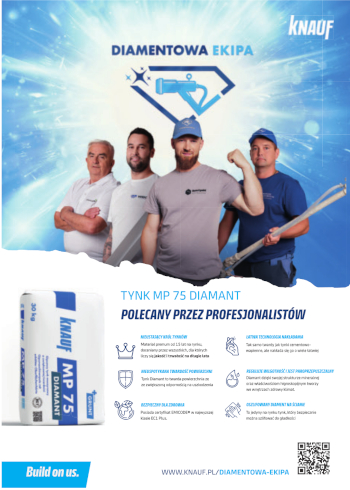
Wejdź na stronę
knauf.pl/diamentowa-ekipa
Materiały Budowlane 06/2024, Okładka III (spis treści >>)


